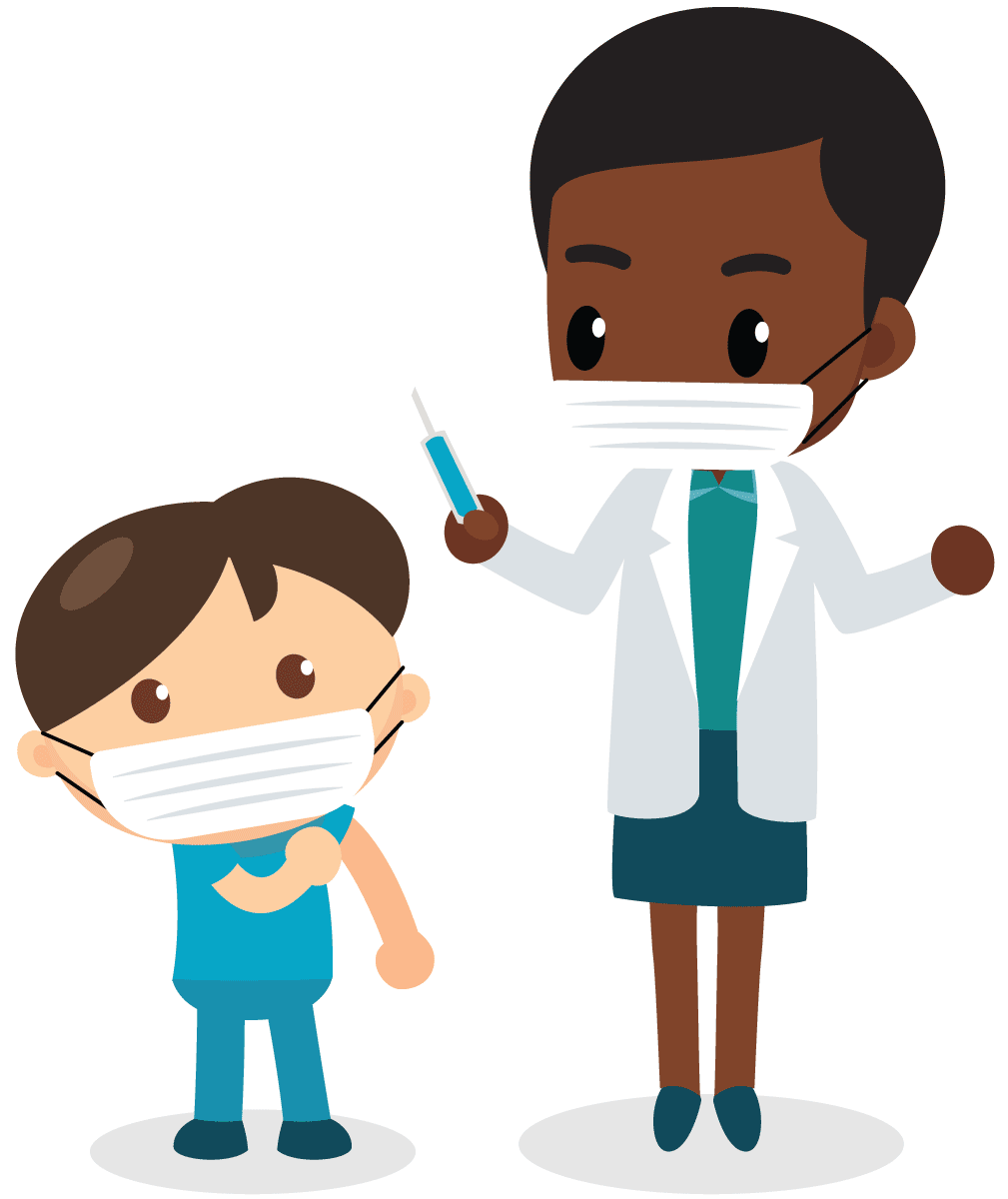
Recently, COVID-19 vaccines for children between the ages of six months and age 5 were authorized by the Food and Drug Administration (FDA) and recommended by the Centers for Disease Control and Prevention (CDC).
Currently, the Southern Nevada Health District is providing COVID-19 vaccine to children six months and older as well as adults of all ages at its clinics.
Steps to approval
The COVID-19 vaccines for children have undergone a very vigorous review process so they can be given to young children. Clinical trials for young children began after clinical trials in adults showed that the vaccines were safe and effective. An additional part of the approval process included determining what the vaccine’s dose would be for young children and what series (two-dose, three-dose) would be the safest and most effective for children under the age of five.
Your child’s vaccine dose is based on their age on the day they are getting vaccinated. This is the same for other childhood vaccines, like hepatitis A and B vaccines. The dosing has been carefully developed to provide the best protection.
Ongoing safety monitoring shows that the COVID-19 vaccine continues to be safe for children. Parents who have questions about the COVID-19 vaccine for their children should speak with their pediatricians.


Who should get vaccinated
COVID-19 vaccination is recommended for everyone age 6 months and older — just like flu vaccines. Even if your child had COVID-19, they should get vaccinated. This provides added protection.
Since the pandemic began, COVID-19 has become one of the top 10 causes of pediatric deaths. Children and teens have been hospitalized due to serious illness. Vaccination remains the most effective way to protect children from serious illness. Your child can receive other recommended childhood vaccines at the same time.
Keep kids safe
While children, including young children, are at a lesser risk of severe COVID-19 disease, they can still get very sick. Less risk doesn’t mean no risk. There is no way to tell how COVID-19 infection might affect children or how sick they might become. Children who have an underlying medical condition could become very ill with COVID-19.
Keep families healthy
When all family members are vaccinated, there is less risk of disease in the home. This means fewer or no missed work or school days and extra protection for older or vulnerable family members who live in the home. Children and their families can participate in childcare activities, play dates, extracurricular activities and visits with extended family members.
COVID-19 vaccine options for young children
There are only two COVID vaccines available for children. These are the Pfizer-BioNTech vaccine and the Moderna vaccine. The Janssen (Johnson and Johnson) vaccine is not available for children. The number of doses and how they are spaced apart is based on child’s age. The amount of vaccine (also known as its dose), is also based on the child’s age.
Pfizer COVID-19 Vaccine
- Children 6 months through 4 years of age receive a three-dose primary series. The first two doses are spaced at least 3-8 weeks apart and the second and third doses spaced at least 8 weeks apart. . The dosage is one-tenth the adult dosage. There are no boosters currently available for this age group.
- Children 5 to 11 years of age receive a two-dose primary series and should also get one booster dose. The first two doses are spaced at least 3-8 weeks apart and the booster dose given at least 5 months after the second dose. The dosage is one-third the adult dosage.
- Children 12 to 17 years of age also receive a two-dose primary series and should also get one booster dose, the timing of which is the same as for children 5 to 11 years of age. However, the dosage is the same as the adult dosage.
Moderna COVID-19 Vaccine
- Children 6 months through 5 years of age receive a two-dose primary series, with the doses spaced at least 4-8 weeks apart. The dosage is one-quarter of the adult dosage. A booster dose is currently not recommended for children who received the Moderna vaccine.
- Children 6 to 11 years of age receive a two-dose primary series, with the doses spaced at least 4-8 weeks apart. The dosage is one-half of the adult dosage. A booster dose is currently not recommended for children who received the Moderna vaccine.
- Children 12 to 17 years of age receive a two-dose primary series, with the doses spaced at least 4-8 weeks apart. The dosage is the same as the adult dosage. A booster dose is currently not recommended for children who received the Moderna vaccine.


